I have five* events for this posting
(1) Science and You (Montréal)
The latest iteration of the Science and You conference took place May 4 – 6, 2017 at McGill University (Montréal, Québec). That’s the sad news, the good news is that they have recorded and released the sessions onto YouTube. (This is the first time the conference has been held outside of Europe, in fact, it’s usually held in France.) Here’s why you might be interested (from the 2017 conference page),
The animator of the conference will be Véronique Morin:
 Véronique Morin is science journalist and communicator, first president of the World Federation of Science Journalists (WFSJ) and serves as judge for science communication awards. She worked for a science program on Quebec’s public TV network, CBCRadio-Canada, TVOntario, and as a freelancer is also a contributor to -among others- The Canadian Medical Journal, University Affairs magazine, NewsDeeply, while pursuing documentary projects.
Véronique Morin is science journalist and communicator, first president of the World Federation of Science Journalists (WFSJ) and serves as judge for science communication awards. She worked for a science program on Quebec’s public TV network, CBCRadio-Canada, TVOntario, and as a freelancer is also a contributor to -among others- The Canadian Medical Journal, University Affairs magazine, NewsDeeply, while pursuing documentary projects.
Let’s talk about S …
Holding the attention of an audience full of teenagers may seem impossible… particularly on topics that might be seen as boring, like sciences! Yet, it’s essential to demistify science in order to make it accessible, even appealing in the eyes of futur citizens.
How can we encourage young adults to ask themselves questions about the surrounding world, nature and science? How can we make them discover sciences with and without digital tools?
Find out tips and tricks used by our speakers Kristin Alford and Amanda Tyndall.
 Kristin Alford
Kristin Alford
Dr Kristin Alford is a futurist and the inaugural Director of MOD., a futuristic museum of discovery at the University of South Australia. Her mind is presently occupied by the future of work and provoking young adults to ask questions about the role of science at the intersection of art and innovation.
Internet Website
Amanda Tyndall
Over 20 years of science communication experience with organisations such as Café Scientifique, The Royal Institution of Great Britain (and Australia’s Science Exchange), the Science Museum in London and now with the Edinburgh International Science Festival. Particularly interested in engaging new audiences through linkages with the arts and digital/creative industries.
Internet Website
A troll in the room
Increasingly used by politicians, social media can reach thousand of people in few seconds. Relayed to infinity, the message seems truthful, but is it really? At a time of fake news and alternative facts, how can we, as a communicator or a journalist, take up the challenge of disinformation?
Discover the traps and tricks of disinformation in the age of digital technologies with our two fact-checking experts, Shawn Otto and Vanessa Schipani, who will offer concrete solutions to unravel the true from the false..
 Shawn Otto
Shawn Otto
Shawn Otto was awarded the IEEE-USA (“I-Triple-E”) National Distinguished Public Service Award for his work elevating science in America’s national public dialogue. He is cofounder and producer of the US presidential science debates at ScienceDebate.org. He is also an award-winning screenwriter and novelist, best known for writing and co-producing the Academy Award-nominated movie House of Sand and Fog.
Vanessa Schipani
Vanessa is a science journalist at FactCheck.org, which monitors U.S. politicians’ claims for accuracy. Previously, she wrote for outlets in the U.S., Europe and Japan, covering topics from quantum mechanics to neuroscience. She has bachelor’s degrees in zoology and philosophy and a master’s in the history and philosophy of science.
At 20,000 clicks from the extreme
Sharing living from a space station, ship or submarine. The examples of social media use in extreme conditions are multiplying and the public is asking for more. How to use public tools to highlight practices and discoveries? How to manage the use of social networks of a large organisation? What pitfalls to avoid? What does this mean for citizens and researchers?
Find out with Phillipe Archambault and Leslie Elliott experts in extrem conditions.
 Philippe Archambault
Philippe Archambault
Professor Philippe Archambault is a marine ecologist at Laval University, the director of the Notre Golfe network and president of the 4th World Conference on Marine Biodiversity. His research on the influence of global changes on biodiversity and the functioning of ecosystems has led him to work in all four corners of our oceans from the Arctic to the Antarctic, through Papua New Guinea and the French Polynesia.
Website

Leslie Elliott
Leslie Elliott leads a team of communicators at Ocean Networks Canada in Victoria, British Columbia, home to Canada’s world-leading ocean observatories in the Pacific and Arctic Oceans. Audiences can join robots equipped with high definition cameras via #livedive to discover more about our ocean.
Website
Science is not a joke!
Science and humor are two disciplines that might seem incompatible … and yet, like the ig-Nobels, humour can prove to be an excellent way to communicate a scientific message. This, however, can prove to be quite challenging since one needs to ensure they employ the right tone and language to both captivate the audience while simultaneously communicating complex topics.
Patrick Baud and Brian Malow, both well-renowned scientific communicators, will give you with the tools you need to capture your audience and also convey a proper scientific message. You will be surprised how, even in Science, a good dose of humour can make you laugh and think.
 Patrick Baud
Patrick Baud
Patrick Baud is a French author who was born on June 30, 1979, in Avignon. He has been sharing for many years his passion for tales of fantasy, and the marvels and curiosities of the world, through different media: radio, web, novels, comic strips, conferences, and videos. His YouTube channel “Axolot”, was created in 2013, and now has over 420,000 followers.
Internet Website
Youtube

Brian Malow
Brian Malow is Earth’s Premier Science Comedian (self-proclaimed). Brian has made science videos for Time Magazine and contributed to Neil deGrasse Tyson’s radio show. He worked in science communications at a museum, blogged for Scientific American, and trains scientists to be better communicators.
Internet Website
YouTube
I don’t think they’ve managed to get everything up on YouTube yet but the material I’ve found has been subtitled (into French or English, depending on which language the speaker used).
Here are the opening day’s talks on YouTube with English subtitles or French subtitles when appropriate. You can also find some abstracts for the panel presentations here. I was particularly in this panel (S3 – The Importance of Reaching Out to Adults in Scientific Culture), Note: I have searched out the French language descriptions for those unavailable in English,
Organized by Coeur des sciences, Université du Québec à Montréal (UQAM)
Animator: Valérie Borde, Freelance Science Journalist
Anouk Gingras, Musée de la civilisation, Québec
Text not available in English
[La science au Musée de la civilisation c’est :
• Une cinquantaine d’expositions et espaces découvertes
• Des thèmes d’actualité, liés à des enjeux sociaux, pour des exposition souvent destinées aux adultes
• Un potentiel de nouveaux publics en lien avec les autres thématiques présentes au Musée (souvent non scientifiques)
L’exposition Nanotechnologies : l’invisible révolution :
• Un thème d’actualité suscitant une réflexion
• Un sujet sensible menant à la création d’un parcours d’exposition polarisé : choix entre « oui » ou « non » au développement des nanotechnologies pour l’avenir
• L’utilisation de divers éléments pour rapprocher le sujet du visiteur
- Les nanotechnologies dans la science-fiction
- Les objets du quotidien contenant des nanoparticules
- Les objets anciens qui utilisant les nanotechnologies
- Divers microscopes retraçant l’histoire des nanotechnologies
• Une forme d’interaction suscitant la réflexion du visiteur via un objet sympatique : le canard de plastique jaune, muni d’une puce RFID
- Sept stations de consultation qui incitent le visiteur à se prononcer et à réfléchir sur des questions éthiques liées au développement des nanotechnologies
- Une compilation des données en temps réel
- Une livraison des résultats personnalisée
- Une mesure des visiteurs dont l’opinion s’est modifiée à la suite de la visite de l’exposition
Résultats de fréquentation :
• Public de jeunes adultes rejoint (51%)
• Plus d’hommes que de femmes ont visité l’exposition
• Parcours avec canard: incite à la réflexion et augmente l’attention
• 3 visiteurs sur 4 prennent le canard; 92% font l’activité en entier]
Marie Lambert-Chan, Québec Science
Capting the attention of adult readership : challenging mission, possible mission
Since 1962, Québec Science Magazine is the only science magazine aimed at an adult readership in Québec. Our mission : covering topical subjects related to science and technology, as well as social issues from a scientific point of view. Each year, we print eight issues, with a circulation of 22,000 copies. Furthermore, the magazine has received several awards and accolades. In 2017, Québec Science Magazine was honored by the Canadian Magazine Awards/Grands Prix du Magazine and was named Best Magazine in Science, Business and Politics category.
Although we have maintained a solid reputation among scientists and the media industry, our magazine is still relatively unknown to the general public. Why is that ? How is it that, through all those years, we haven’t found the right angle to engage a broader readership ?
We are still searching for definitive answers, but here are our observations :
Speaking science to adults is much more challenging than it is with children, who can marvel endlessly at the smallest things. Unfortunately, adults lose this capacity to marvel and wonder for various reasons : they have specific interests, they failed high-school science, they don’t feel competent enough to understand scientific phenomena. How do we bring the wonder back ? This is our mission. Not impossible, and hopefully soon to be accomplished. One noticible example is the number of reknown scientists interviewed during the popular talk-show Tout le monde en parle, leading us to believe the general public may have an interest in science.
However, to accomplish our mission, we have to recount science. According to the Bulgarian writer and blogger Maria Popova, great science writing should explain, elucidate and enchant . To explain : to make the information clear and comprehensible. To elucidate : to reveal all the interconnections between the pieces of information. To enchant : to go beyond the scientific terms and information and tell a story, thus giving a kaleidoscopic vision of the subject. This is how we intend to capture our readership’s attention.
Our team aims to accomplish this challenge. Although, to be perfectly honest, it would be much easier if we had more resources, financial-wise or human-wise. However, we don’t lack ideas. We dream of major scientific investigations, conferences organized around themes from the magazine’s issues, Web documentaries, podcasts… Such initiatives would give us the visibility we desperately crave.
That said, even in the best conditions, would be have more subscribers ? Perhaps. But it isn’t assured. Even if our magazine is aimed at adult readership, we are convinced that childhood and science go hand in hand, and is even decisive for the children’s future. At the moment, school programs are not in place for continuous scientific development. It is possible to develop an interest for scientific culture as adults, but it is much easier to achieve this level of curiosity if it was previously fostered.
Robert Lamontagne, Université de Montréal
Since the beginning of my career as an astrophysicist, I have been interested in scientific communication to non-specialist audiences. I have presented hundreds of lectures describing the phenomena of the cosmos. Initially, these were mainly offered in amateur astronomers’ clubs or in high-schools and Cégeps. Over the last few years, I have migrated to more general adult audiences in the context of cultural activities such as the “Festival des Laurentides”, the Arts, Culture and Society activities in Repentigny and, the Université du troisième âge (UTA) or Senior’s University.
The Quebec branch of the UTA, sponsored by the Université de Sherbrooke (UdeS), exists since 1976. Seniors universities, created in Toulouse, France, are part of a worldwide movement. The UdeS and its senior’s university antennas are members of the International Association of the Universities of the Third Age (AIUTA). The UTA is made up of 28 antennas located in 10 regions and reaches more than 10,000 people per year. Antenna volunteers prepare educational programming by drawing on a catalog of courses, seminars and lectures, covering a diverse range of subjects ranging from history and politics to health, science, or the environment.
The UTA is aimed at people aged 50 and over who wish to continue their training and learn throughout their lives. It is an attentive, inquisitive, educated public and, given the demographics in Canada, its number is growing rapidly. This segment of the population is often well off and very involved in society.
I usually use a two-prong approach.
• While remaining rigorous, the content is articulated around a few ideas, avoiding analytical expressions in favor of a qualitative description.
• The narrative framework, the story, which allows to contextualize the scientific content and to forge links with the audience.
Sophie Malavoy, Coeur des sciences – UQAM
Many obstacles need to be overcome in order to reach out to adults, especially those who aren’t in principle interested in science.
• Competing against cultural activities such as theater, movies, etc.
• The idea that science is complex and dull
• A feeling of incompetence. « I’ve always been bad in math and physics»
• Funding shortfall for activities which target adults
How to reach out to those adults?
• To put science into perspective. To bring its relevance out by making links with current events and big issues (economic, heath, environment, politic). To promote a transdisciplinary approach which includes humanities and social sciences.
• To stake on originality by offering uncommon and ludic experiences (scientific walks in the city, street performances, etc.)
• To bridge between science and popular activities to the public (science/music; science/dance; science/theater; science/sports; science/gastronomy; science/literature)
• To reach people with emotions without sensationalism. To boost their curiosity and ability to wonder.
• To put a human face on science, by insisting not only on the results of a research but on its process. To share the adventure lived by researchers.
• To liven up people’s feeling of competence. To insist on the scientific method.
• To invite non-scientists (citizens groups, communities, consumers, etc.) to the reflections on science issues (debate, etc.). To move from dissemination of science to dialog
Didier Pourquery, The Conversation France
Text not available in English
[Depuis son lancement en septembre 2015 la plateforme The Conversation France (2 millions de pages vues par mois) n’a cessé de faire progresser son audience. Selon une étude menée un an après le lancement, la structure de lectorat était la suivante
Pour accrocher les adultes et les ainés deux axes sont intéressants ; nous les utilisons autant sur notre site que sur notre newsletter quotidienne – 26.000 abonnés- ou notre page Facebook (11500 suiveurs):
1/ expliquer l’actualité : donner les clefs pour comprendre les débats scientifiques qui animent la société ; mettre de la science dans les discussions (la mission du site est de « nourrir le débat citoyen avec de l’expertise universitaire et de la recherche »). L’idée est de poser des questions de compréhension simple au moment où elles apparaissent dans le débat (en période électorale par exemple : qu’est-ce que le populisme ? Expliqué par des chercheurs de Sciences Po incontestables.)
Exemples : comprendre les conférences climat -COP21, COP22 – ; comprendre les débats de société (Gestation pour autrui); comprendre l’économie (revenu universel); comprendre les maladies neurodégénératives (Alzheimer) etc.
2/ piquer la curiosité : utiliser les formules classiques (le saviez-vous ?) appliquées à des sujets surprenants (par exemple : « Que voit un chien quand il regarde la télé ? » a eu 96.000 pages vues) ; puis jouer avec ces articles sur les réseaux sociaux. Poser des questions simples et surprenantes. Par exemple : ressemblez-vous à votre prénom ? Cet article académique très sérieux a comptabilisé 95.000 pages vues en français et 171.000 en anglais.
3/ Susciter l’engagement : faire de la science participative simple et utile. Par exemple : appeler nos lecteurs à surveiller l’invasion de moustiques tigres partout sur le territoire. Cet article a eu 112.000 pages vues et a été republié largement sur d’autres sites. Autre exemple : appeler les lecteurs à photographier les punaises de leur environnement.]
Here are my very brief and very rough translations. (1) Anouk Gingras is focused largely on a nanotechnology exhibit and whether or not visitors went through it and participated in various activities. She doesn’t seem specifically focused on science communication for adults but they are doing some very interesting and related work at Québec’s Museum of Civilization. (2) Didier Pourquery is describing an online initiative known as ‘The Conversation France’ (strange—why not La conversation France?). Moving on, there’s a website with a daily newsletter (blog?) and a Facebook page. They have two main projects, one is a discussion of current science issues in society, which is informed with and by experts but is not exclusive to experts, and more curiosity-based science questions and discussion such as What does a dog see when it watches television?
Serendipity! I hadn’t stumbled across this conference when I posted my May 12, 2017 piece on the ‘insanity’ of science outreach in Canada. It’s good to see I’m not the only one focused on science outreach for adults and that there is some action, although seems to be a Québec-only effort.
(2) Ingenious—a book launch in Vancouver
The book will be launched on Thursday, June 1, 2017 at the Vancouver Public Library’s Central Branch (from the Ingenious: An Evening of Canadian Innovation event page)
Ingenious: An Evening of Canadian Innovation
Thursday, June 1, 2017 (6:30 pm – 8:00 pm)
Central Branch
Description
Gov. Gen. David Johnston and OpenText Corp. chair Tom Jenkins discuss Canadian innovation and their book Ingenious: How Canadian Innovators Made the World Smarter, Smaller, Kinder, Safer, Healthier, Wealthier and Happier.
Books will be available for purchase and signing.
Doors open at 6 p.m.
INGENIOUS : HOW CANADIAN INNOVATORS MADE THE WORLD SMARTER, SMALLER, KINDER, SAFER, HEALTHIER, WEALTHIER, AND HAPPIER
Address:
350 West Georgia St.
VancouverV6B 6B1
Get Directions
Location Details:
Alice MacKay Room, Lower Level
I do have a few more details about the authors and their book. First, there’s this from the Ottawa Writer’s Festival March 28, 2017 event page,
To celebrate Canada’s 150th birthday, Governor General David Johnston and Tom Jenkins have crafted a richly illustrated volume of brilliant Canadian innovations whose widespread adoption has made the world a better place. From Bovril to BlackBerrys, lightbulbs to liquid helium, peanut butter to Pablum, this is a surprising and incredibly varied collection to make Canadians proud, and to our unique entrepreneurial spirit.
Successful innovation is always inspired by at least one of three forces — insight, necessity, and simple luck. Ingenious moves through history to explore what circumstances, incidents, coincidences, and collaborations motivated each great Canadian idea, and what twist of fate then brought that idea into public acceptance. Above all, the book explores what goes on in the mind of an innovator, and maps the incredible spectrum of personalities that have struggled to improve the lot of their neighbours, their fellow citizens, and their species.
From the marvels of aboriginal invention such as the canoe, snowshoe, igloo, dogsled, lifejacket, and bunk bed to the latest pioneering advances in medicine, education, philanthropy, science, engineering, community development, business, the arts, and the media, Canadians have improvised and collaborated their way to international admiration. …
Then, there’s this April 5, 2017 item on Canadian Broadcasting Corporation’s (CBC) news online,
From peanut butter to the electric wheelchair, the stories behind numerous life-changing Canadian innovations are detailed in a new book.
Gov. Gen. David Johnston and Tom Jenkins, chair of the National Research Council and former CEO of OpenText, are the authors of Ingenious: How Canadian Innovators Made the World Smarter, Smaller, Kinder, Safer, Healthier, Wealthier and Happier. The authors hope their book reinforces and extends the culture of innovation in Canada.
“We started wanting to tell 50 stories of Canadian innovators, and what has amazed Tom and myself is how many there are,” Johnston told The Homestretch on Wednesday. The duo ultimately chronicled 297 innovations in the book, including the pacemaker, life jacket and chocolate bars.
“Innovations are not just technological, not just business, but they’re social innovations as well,” Johnston said.
Many of those innovations, and the stories behind them, are not well known.
“We’re sort of a humble people,” Jenkins said. “We’re pretty quiet. We don’t brag, we don’t talk about ourselves very much, and so we then lead ourselves to believe as a culture that we’re not really good inventors, the Americans are. And yet we knew that Canadians were actually great inventors and innovators.”
‘Opportunities and challenges’
For Johnston, his favourite story in the book is on the light bulb.
“It’s such a symbol of both our opportunities and challenges,” he said. “The light bulb was invented in Canada, not the United States. It was two inventors back in the 1870s that realized that if you passed an electric current through a resistant metal it would glow, and they patented that, but then they didn’t have the money to commercialize it.”
American inventor Thomas Edison went on to purchase that patent and made changes to the original design.
Johnston and Jenkins are also inviting readers to share their own innovation stories, on the book’s website.
I’m looking forward to the talk and wondering if they’ve included the botox and cellulose nanocrystal (CNC) stories to the book. BTW, Tom Jenkins was the chair of a panel examining Canadian research and development and lead author of the panel’s report (Innovation Canada: A Call to Action) for the then Conservative government (it’s also known as the Jenkins report). You can find out more about in my Oct. 21, 2011 posting.
(3) Made in Canada (Vancouver)
This is either fortuitous or there’s some very high level planning involved in the ‘Made in Canada; Inspiring Creativity and Innovation’ show which runs from April 21 – Sept. 4, 2017 at Vancouver’s Science World (also known as the Telus World of Science). From the Made in Canada; Inspiring Creativity and Innovation exhibition page,
Celebrate Canadian creativity and innovation, with Science World’s original exhibition, Made in Canada, presented by YVR [Vancouver International Airport] — where you drive the creative process! Get hands-on and build the fastest bobsled, construct a stunning piece of Vancouver architecture and create your own Canadian sound mashup, to share with friends.
Vote for your favourite Canadian inventions and test fly a plane of your design. Discover famous (and not-so-famous, but super neat) Canadian inventions. Learn about amazing, local innovations like robots that teach themselves, one-person electric cars and a computer that uses parallel universes.
Imagine what you can create here, eh!!
You can find more information here.
One quick question, why would Vancouver International Airport be presenting this show? I asked that question of Science World’s Communications Coordinator, Jason Bosher, and received this response,
YVR is the presenting sponsor. They donated money to the exhibition and they also contributed an exhibit for the “We Move” themed zone in the Made in Canada exhibition. The YVR exhibit details the history of the YVR airport, it’s geographic advantage and some of the planes they have seen there.
I also asked if there was any connection between this show and the ‘Ingenious’ book launch,
Some folks here are aware of the book launch. It has to do with the Canada 150 initiative and nothing to do with the Made in Canada exhibition, which was developed here at Science World. It is our own original exhibition.
So there you have it.
(4) Robotics, AI, and the future of work (Ottawa)
I’m glad to finally stumble across a Canadian event focusing on the topic of artificial intelligence (AI), robotics and the future of work. Sadly (for me), this is taking place in Ottawa. Here are more details from the May 25, 2017 notice (received via email) from the Canadian Science Policy Centre (CSPC),
CSPC is Partnering with CIFAR {Canadian Institute for Advanced Research]
The Second Annual David Dodge Lecture
…
Join CIFAR and Senior Fellow Daron Acemoglu for
the Second Annual David Dodge CIFAR Lecture in Ottawa on June 13.
June 13, 2017 | 12 – 2 PM [emphasis mine]
Fairmont Château Laurier, Drawing Room | 1 Rideau St, Ottawa, ON
Along with the backlash against globalization and the outsourcing of jobs, concern is also growing about the effect that robotics and artificial intelligence will have on the labour force in advanced industrial nations. World-renowned economist Acemoglu, author of the best-selling book Why Nations Fail, will discuss how technology is changing the face of work and the composition of labour markets. Drawing on decades of data, Acemoglu explores the effects of widespread automation on manufacturing jobs, the changes we can expect from artificial intelligence technologies, and what responses to these changes might look like. This timely discussion will provide valuable insights for current and future leaders across government, civil society, and the private sector.
Daron Acemoglu is a Senior Fellow in CIFAR’s Insitutions, Organizations & Growth program, and the Elizabeth and James Killian Professor of Economics at the Massachusetts Institute of Technology.
Tickets: $15 (A light lunch will be served.)
You can find a registration link here. Also, if you’re interested in the Canadian efforts in the field of artificial intelligence you can find more in my March 24, 2017 posting (scroll down about 25% of the way and then about 40% of the way) on the 2017 Canadian federal budget and science where I first noted the $93.7M allocated to CIFAR for launching a Pan-Canadian Artificial Intelligence Strategy.
(5) June 2017 edition of the Curiosity Collider Café (Vancouver)
This is an art/science (also known called art/sci and SciArt) that has taken place in Vancouver every few months since April 2015. Here’s more about the June 2017 edition (from the Curiosity Collider events page),
Collider Cafe
When
8:00pm on Wednesday, June 21st, 2017. Door opens at 7:30pm.
Where
Café Deux Soleils. 2096 Commercial Drive, Vancouver, BC (Google Map).
Cost
$5.00-10.00 cover at the door (sliding scale). Proceeds will be used to cover the cost of running this event, and to fund future Curiosity Collider events. Curiosity Collider is a registered BC non-profit organization.
***
#ColliderCafe is a space for artists, scientists, makers, and anyone interested in art+science. Meet, discover, connect, create. How do you explore curiosity in your life? Join us and discover how our speakers explore their own curiosity at the intersection of art & science.
The event will start promptly at 8pm (doors open at 7:30pm). $5.00-10.00 (sliding scale) cover at the door. Proceeds will be used to cover the cost of running this event, and to fund future Curiosity Collider events. Curiosity Collider is a registered BC non-profit organization.
Enjoy!
*I changed ‘three’ events to ‘five’ events and added a number to each event for greater reading ease on May 31, 2017.
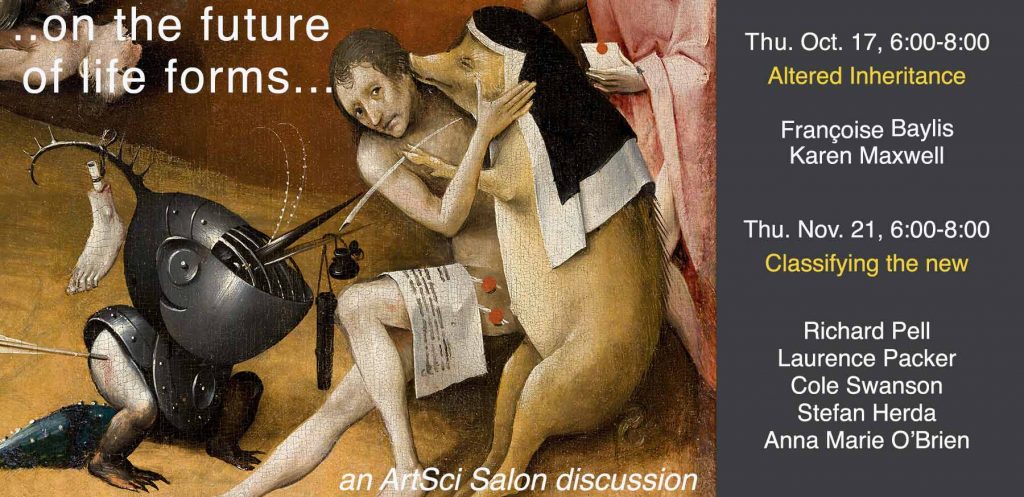
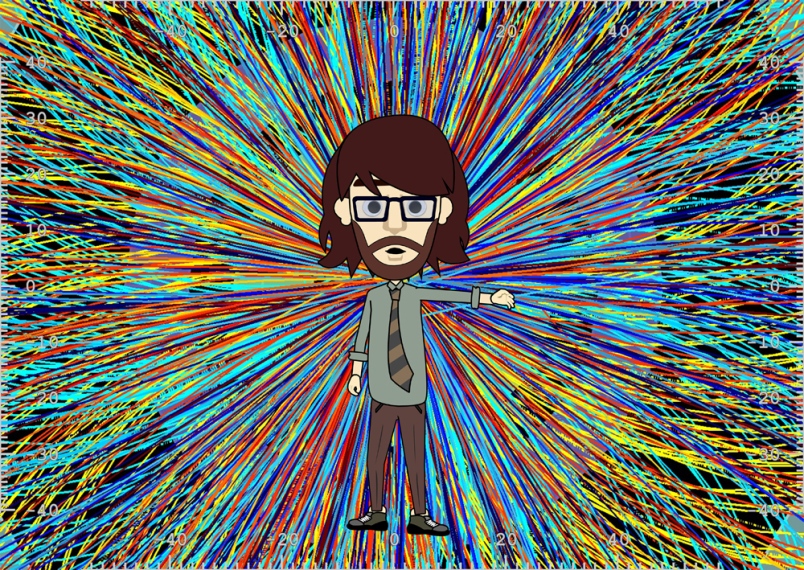
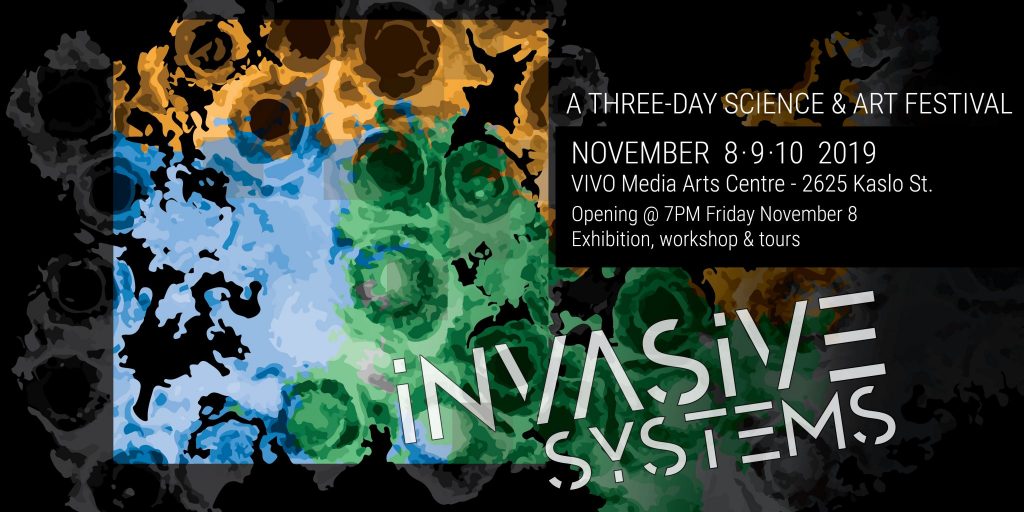
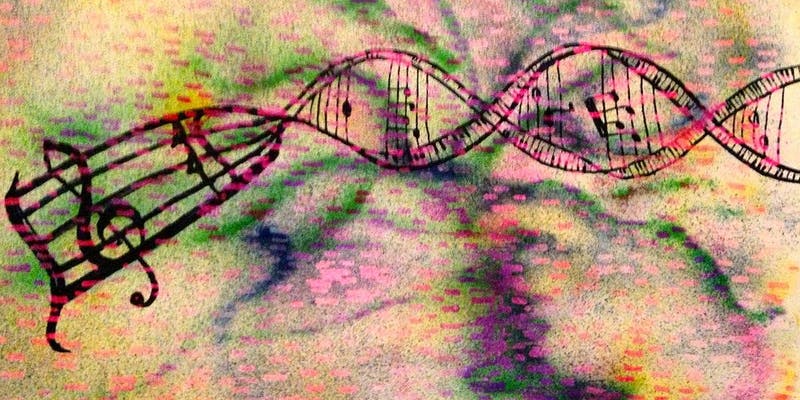
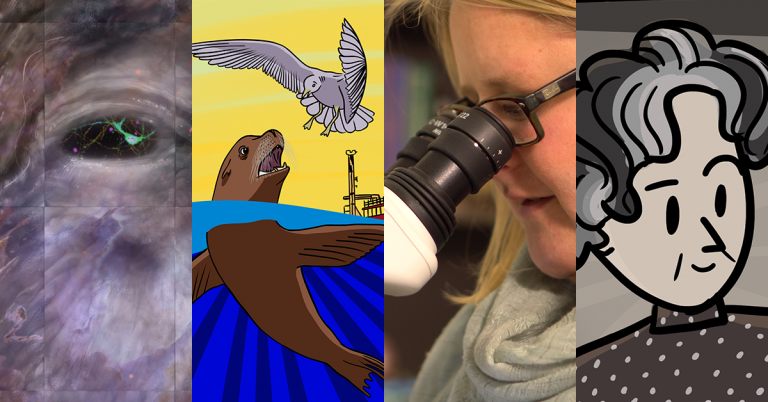









 Véronique Morin is science journalist and communicator, first president of the World Federation of Science Journalists (WFSJ) and serves as judge for science communication awards. She worked for a science program on Quebec’s public TV network, CBCRadio-Canada, TVOntario, and as a freelancer is also a contributor to -among others- The Canadian Medical Journal, University Affairs magazine, NewsDeeply, while pursuing documentary projects.
Véronique Morin is science journalist and communicator, first president of the World Federation of Science Journalists (WFSJ) and serves as judge for science communication awards. She worked for a science program on Quebec’s public TV network, CBCRadio-Canada, TVOntario, and as a freelancer is also a contributor to -among others- The Canadian Medical Journal, University Affairs magazine, NewsDeeply, while pursuing documentary projects. Kristin Alford
Kristin Alford
 Shawn Otto
Shawn Otto
 Philippe Archambault
Philippe Archambault
 Patrick Baud
Patrick Baud